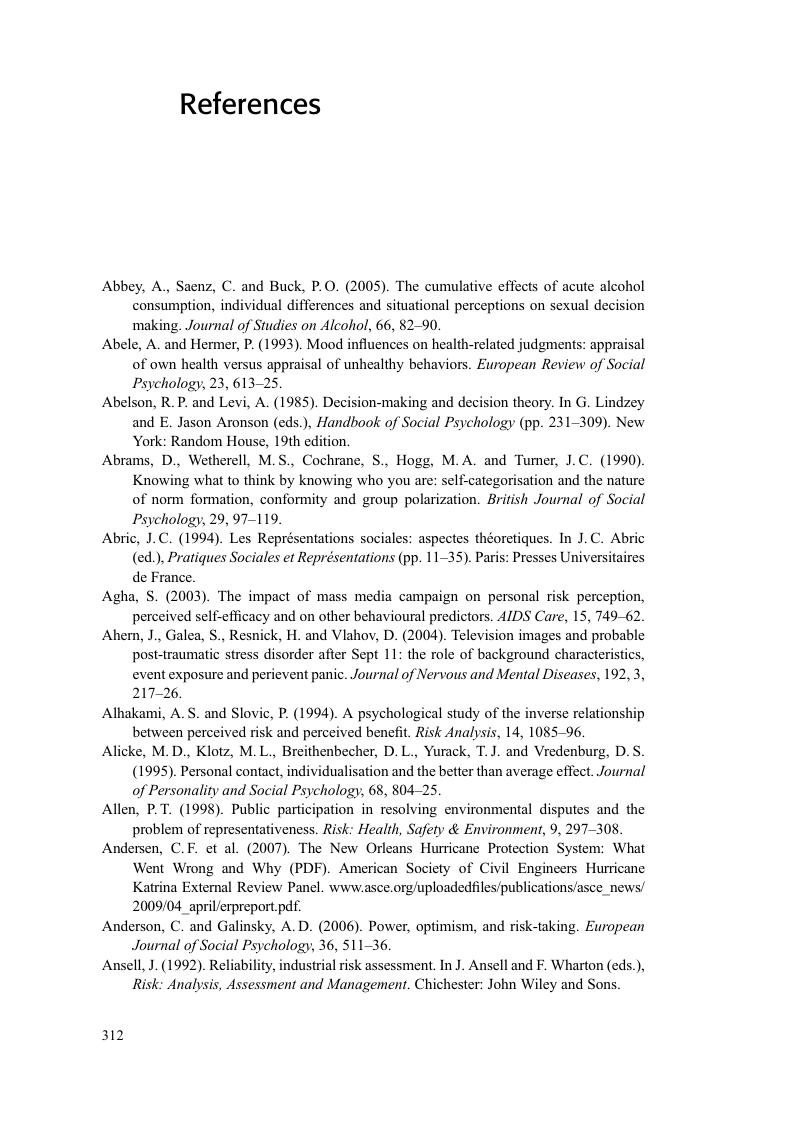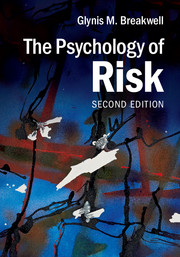Book contents
- Frontmatter
- Dedication
- Contents
- List of figures
- List of boxes
- Preface to the second edition
- Acknowledgements
- 1 A social psychological framework for analysing risk
- 2 Hazard perception
- 3 Individual and group differences in risk perception
- 4 Decision-making about risks
- 5 Risk and emotion
- 6 Risk communication
- 7 Errors and accidents; emergencies and disasters
- 8 Risk management; risk in complex systems
- 9 Social amplification, social representations and identity processes
- 10 Changing risk reactions: lessons from the psychology of risk
- References
- Index
- References
References
Published online by Cambridge University Press: 05 October 2014
- Frontmatter
- Dedication
- Contents
- List of figures
- List of boxes
- Preface to the second edition
- Acknowledgements
- 1 A social psychological framework for analysing risk
- 2 Hazard perception
- 3 Individual and group differences in risk perception
- 4 Decision-making about risks
- 5 Risk and emotion
- 6 Risk communication
- 7 Errors and accidents; emergencies and disasters
- 8 Risk management; risk in complex systems
- 9 Social amplification, social representations and identity processes
- 10 Changing risk reactions: lessons from the psychology of risk
- References
- Index
- References
Summary

- Type
- Chapter
- Information
- The Psychology of Risk , pp. 312 - 354Publisher: Cambridge University PressPrint publication year: 2014



